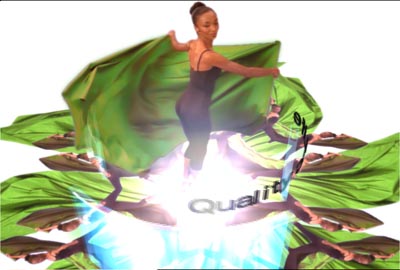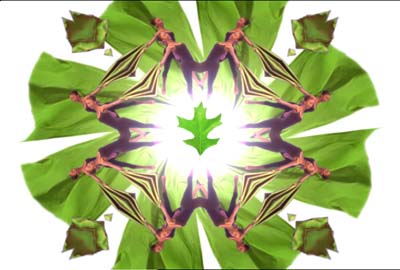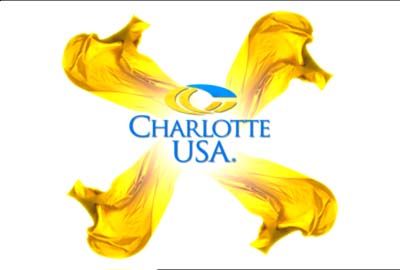In our continuing Artist in Action series, we thought it would be good to look at Flame artists who have move over to directing. Many, such as Keith Adam’s at SPIN in Atlanta, – do their own visual design work, for complete creative control.
We caught up with Adams when he was recently on a shoot in Sydney and asked him about his latest spot for Charlotte, USA.
FXG: Great spot, how long did it take to complete?
Keith Adams: The Spot (one 30 second piece) took two weeks in post production. Some was spent exploring ideas, some of that time was spent simply waiting for our clients to respond.
FXG: So how did it feel to have complete creative conttol? What was the process?
KA: I was in the unique position of being able to act as designer, director, and Inferno artist for the project. The spot was awarded based on a set of design boards I did for another client that was never produced. We first started with storyboard frames. We used Cinema 4D to create people and other objects to mimic live action and created a series of frames.
We made sure that each frame looked like a piece of art in its own right. While the design was not locked at this stage, it helped us to realize that limiting our color pallet was important. This gave the client confidence early on in the project and helped me to visualize important design issues.
Once the frames were established and boarded, we took the same frames and cut them in sequence, timing each to music. We also attempted a voice over at this point, but that was later rejected. We did not want a voice over, but it helped us to put the issue to rest early in the process. The music was simply a stand in piece we liked that gave an attractive aesthetic and added rhythm and a sense of timing to the piece. This further increased the client’s comfort level.
I also used the geometry created in Cinema 4D to pre-viz the sequences and determine where the real camera would need to be. Although the client was very interested in the boards, design and the timings, the pre-viz was only for the crew and myself. I realized that I had problems due to the fact that a real camera on the proper sized jib arm necessary to make the move would never be able to move as fast and as smooth as necessary. This was not a problem that I shared with the client, however, this exercise did allow me to wrestle with the problem before we ever got into the studio.
The pre-viz process helped me realize that a slightly wider lens would put me closer to the subject and require less travel for the camera which equated to faster and smoother. I also realized that in order to speed up the camera travel in post, I would need to carefully choreograph the talent’s movement in order to make a post time warp look natural. Also, through pre-viz I realized that a simple straight line from point A to point B would compromise the shot. I needed the camera to travel a true 90-degree arc and it was worth pushing for it.
I was also able to work out my initial problem which was where do I place tracking points on the floor in order to have the most “leverage” (i.e. the most accurate areas to track) while not interfering with the talent movements. All of these questions were answered in the pre-viz exercise. I also found it extremely valuable to be able to show the production crew exactly what the issues were before wasting time setting up the rig, only to have to then realize the issues on set. The pre-viz was invaluable even though it was a simple concept.
I ended up using orange Ping-Pong balls for tracking points. The spherical shape is always a circle no mater what angle you view it from.

FXG: What was the primary communication of the spot?
KA: The spot is part of an image campaign for Charlotte. The client’s objective for the spot was to encourage business to relocate to the area by positioning it as a major metropolitan city. Early on, there were a number of characteristics of the area that the creatives wanted to highlight in the spot, however, it was later decided that presenting three major ideas would be the goal. The major ideas were simple: “Business Strengths,” “Accessibility,” and “Quality of Life.”
In each case we would support each of the three big ideas with visual specifics. At one point in the process we had not only aircraft for Accessibility, but also trucks, trains, and cars. It was determined that a simple jet taking off lent more to the design than including every possible mode of transport available. The storyboards helped us prove to the client that limiting our pallet of elements would prove to make a stronger statement. We has as a major objective that the spot should leave the viewer feeling that Charlotte is a contemporary, progressive, and inviting city. We likened the concept for the spot to those “minimalist” posters that you see in airports inviting you to visit dreamy places. The market we focused on was the decision-makers in Corporate America — the CEO’s, CFO’s, and upper management.
FXG: what equipment was used in post production?
KA: Equipment was Inferno, Tinder Tools and Sapphire Sparks, Fire, Cinema 4D.
The bulk of the work was done in Inferno action and Sparks.

FXG: How was the primary Kaleidoscope effect done?
KA: On a few occasions, the client mandated that particular elements be seen through the kaleidoscope. This sometimes made it difficult for us because it was important for the aesthetic that we limit the pallet. Compromises were made along the way and we were able to reach an agreement whereby we included various elements but restricted the range of the pallet. It was determined that a central figure would be at the center of each scenario: a businessman, an aircraft and a dancer. And that something would spawn these central figures. While the figures were spawning, a camera move would break the 2D plane and allow the figure to present itself to camera. This added interest, and helped us focus on a central component.
The Kaleidoscope is comprised of live action people, live action elements, 3D elements, and a variety of soft glows and soft shadows. A simple key was created from live action people shot on green screen. Tracking marks were painted out to create a pristine mat for each element. The people were often re-posed in action then taken into Sapphire Sparks, or 5D Sparks to create a true mirrored Kaleidoscope image. Then the mats were taken though the same spark, to be taken in to Action as a layer. Often Batch was used to marry certain layers together, but with each scenario having as many as 40-50 layers, Batch became cumbersome.
FXG: The audio is listed as London Philharmonic, was it stock ? or recorded ? Did you work to the audio or mix to the vision?
KA: The audio was written by a Charlotte composer and then performed by the London Philharmonic. We did all visuals first then cut the music, then tweaked the visuals to fit. The agency and I disagreed about the music.
FXG: What technical aspects did you face ?
KA: One aspect that I have not touched on was the smoothing effect we did on the camera moves. One thing the pre-viz did not show me was just how jerky the real camera move would be. Even with multiple takes, having the talent, jib operator, focus puller, and DP all land smoothly on a spot at a given time was not to be. Motion control was not in the budget. After an hour of takes we had one that sorta worked…well kinda. I did a technique where I tracked the floor not as four point tracking, which would probably be expected, but by first doing a simple one point track. Once the data was gathered, it was easy to see where the bumps and jars occurred. To fix this I applied the stabilizer data to the shot, effectively moving the shot off the top of the viewer, then doing an Inferno move, generating as few key frames as possible. I smoothly moved the shot to the center of frame allowing the bumps to only be seen on the edges of frame which, in this case, did not matter. This effectively stabilized the bumps in the master move and let me then track the smoothed shot by recreating the move in action with the action camera. The idea was to have other elements and footage be effected by the same camera move we did in studio, but to do it in Action. This would effectively merge live action camera moves and computer camera moves seamlessly. With the running ?master move? footage always locked perpendicular to camera, we allowed the camera to rotate around everything else, created the move that matched the live action.

FXG: What’s next for Keith Adams?
KA: I am currently doing Inferno effects and design work at SPIN in Atlanta and I am also being represented by Comotion Films as a director for effects work such as this spot. And I intend to fly back to Sydney for a decent holiday soon,.. maybe hire a yacht and take a few friends to a tropical Island or two !!! (Laughs).
